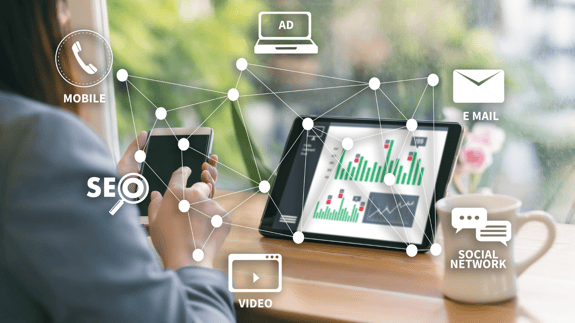Trade shows are cancelled or postponed. Booth production is on a halt. Your trade show budget is in disarray. Where do you go from here?
One could argue that marketers and business owners are perhaps the best prepared to handle these unexpected global events. The ability to adapt to change and new information is an innate part of our skillset.
It’s time to take your trade show marketing strategy in a new direction. Here’s how to get started:
1. Define event objectives
Get back to basics by revisiting the goals you had for your trade show marketing efforts. Your answers may include one or more of the following common trade show objectives:
-
Drive brand awareness
-
Increase lead generation
-
Perform a new product launch
2. Develop ways to meet trade show objectives digitally
In some ways, we are fortunate to be experiencing this large-scale crisis in a technological age in which we have a multitude of digital tools available to us.
Meeting your trade show objectives without an in-person trade show will require an understanding of the scope of these digital tools, and how to use them effectively.
The digital marketing strategy you choose will depend on your original objectives.
a) BRAND AWARENESS AND LEAD GENERATION
If your trade show goals were to make your brand and products recognizable and/or to attract new prospects, video content will be your new best friend.
-
How-tos and explainer videos: Deliver value to your leads by creating videos that solve a challenge or answer a question.
-
-
Company culture videos: Show your audience who you are, why you do what you do, and the ways that you make life easier for your customers.
-
-
-
Services run-through: Break down your menu of services in an easy-to-absorb video format. This is especially helpful for businesses whose products and services are intangible or highly technical.
-
-
-
Customer reviews and testimonials: Especially for leads who are already proceeding toward the bottom of the marketing funnel, testimonials, and reviews are powerful conversion tools.
-
-
-
Live videos: Missing that feeling of connecting in-person with your audience? A live video gives you a chance for direct engagement in real-time.
-
-
-
Presentation videos: Don’t scrap the trade show presentation you had planned for your booth! Record it and share it with your audience digitally.
-
-
-
Live webinars: Deliver helpful information to your audience via live webinar, so your audience can learn and ask questions in a more personal digital format.
-
-
-
Podcasts and interviews: Podcasts, with or without video production, are a popular and easily consumable form of content. Podcasts are especially useful for guest interviews, which allows you to target your online audience AND your guest’s followers.
-
b) PRODUCT LAUNCHES
Pivoting your trade show marketing strategy to a digital product launch can be trickier, particularly for the food and beverage industry.
A new product launch isn’t the same without samples and demos. Trying a new product is a sensory-driven experience, so you’ll need to ensure that your product is actually in the hands of your audience.
One challenge is that distribution will take some extra time and effort. You’ll need to create and deliver testers, samples, or tasting kits.
Your kits should include user guides that showcase unique aspects of your product, and any features or functionalities that need to be emphasized or explained.
Family and friends make good testers, as well as social media influencers. Distribute your testing kits and ask that recipients record and share their sampling experience, or at least provide feedback on social media.
Achieving your trade show marketing strategy goals without an actual trade show can be perplexing and arduous, but marketers and small business owners always find a way.
Until we can meet once again in exhibit halls around the world, your friends at Exhibit Options will be working diligently on new digital trade show solutions. We’re all in this together!



COMMENTS